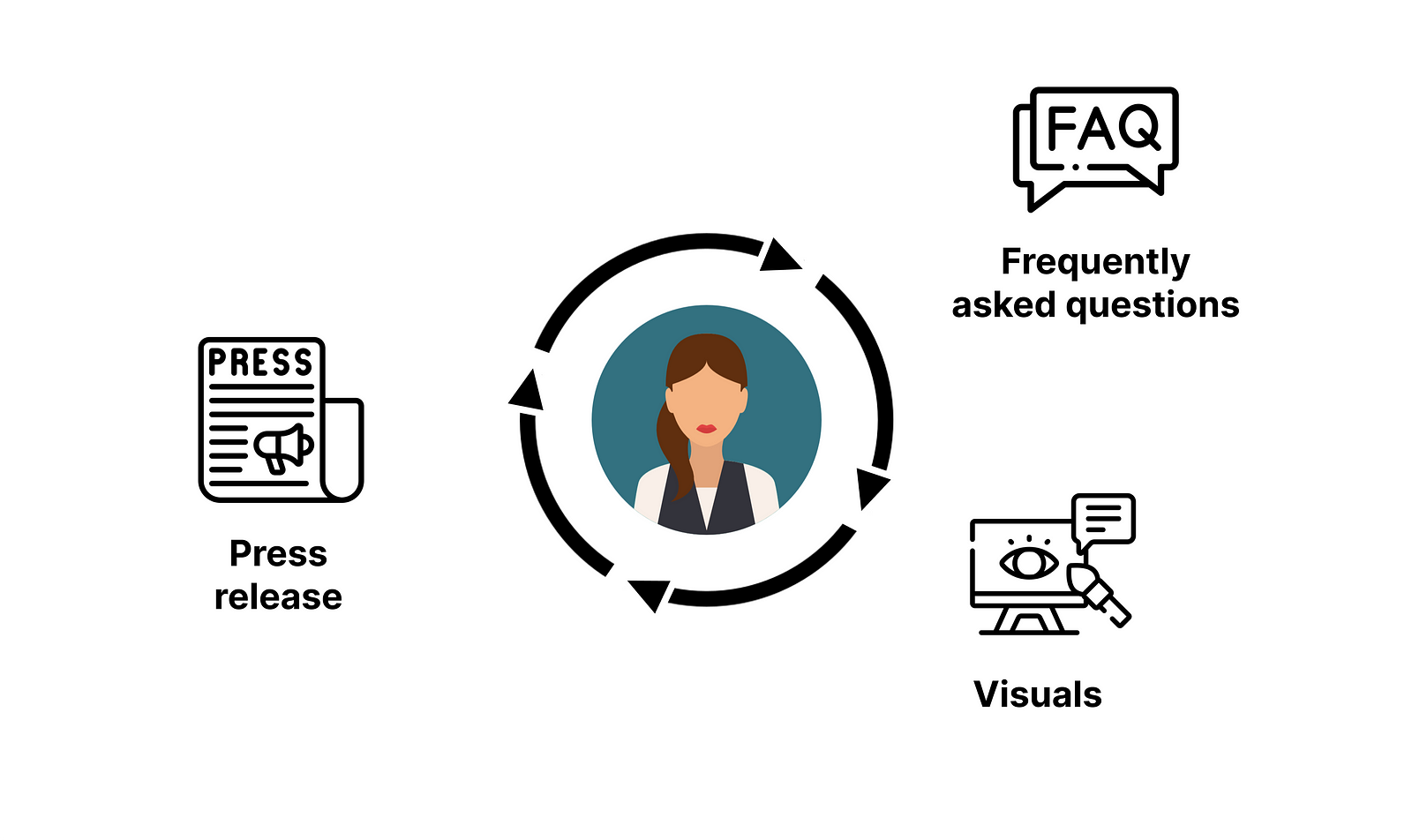Working backward: Why it is a must-have approach for product designers

When we design a product, we typically start with setting a global goal that we want to achieve; next, we define a strategy that can help us to do that, and we follow the strategy rigorously. This approach has two problems. First, the goal we set may be invalid. We might invest a lot of time building something that doesn’t provide any value to other people. Second, the goal can be over-focused on business objectives rather than user needs. For example, we can set a goal “Have 1,000 daily active users,” but such a goal doesn’t say much about the experience we want to create.
A method called working backward can help us overcome problems.
What does working backward mean?
Working backward is a method popularized by Amazon. When you work backward, you dream about how your product or service will look and work in the future. You imagine an ideal snapshot of your product. This way of thinking can help you better understand where you are headed as a product team.
Amazon was not the first company to share this way of thinking. Many companies and entrepreneurs shared similar ideas before Amazon. Steve Jobs formulated the importance of the working backward approach during the WWDC 1997:
“You’ve got to start with the customer experience and work backward to the technology. You can’t start with the technology then try to figure out where to sell it.”
Three elements of the working backward approach
You may ask, but why does Amazon get credits for working backward? The answer is simple — Amazon created a specific approach for working backward, and this approach has three elements:

Press release
A press release is a one-page document that describes a new product or service using simple language that everyone can understand. A press release can help us imagine a future in which our product is available to the masses. We can easily imagine what our target users will say about a product without writing a single line of code. Press-release should be short and focussed.
Here are a few key elements that you should include in it:
- Headline;
- Summary (one or two-sentence summary of the document);
- User problem(s) (describe the user and the problems they face);
- Solution (propose a solution and highlight its benefits);
- User testimonial (quote from a fictional user that articulates their experience after working with a product);
A press release helps product creators get into the mind of their users and think about how they will describe the benefits of using your product.
FAQ (frequently asked questions)
The FAQ includes both user FAQs and product team FAQs. FAQ can be a multi-page document. FAQ helps us dive into details and learn about the experience we want to design.
User FAQs include questions that users can ask, such as “How is this product different from similar products?”, “Where can I buy this product?” or “How much does this product cost?” Product team FAQs include questions that a product team wants to ask, such as “What is our minimum viable product?” or “What is user feedback we have collected so far ?”
Visualization of the future design
Visuals represent what the user experience will look like. Visuals are tangible artifacts the team creates to communicate the product idea to others. There are many types of visuals, including information architecture diagrams, wireframes, mockups, and prototypes.
When creating visuals, you don’t need to invest in pixel-perfect design when you are working backward.
The fidelity of your design should match the maturity of your idea.
It’s OK to use rough, low-fidelity visualizations at the early stages of the design process. The goal is to communicate your product idea to others so they can clearly understand what your product is all about.
The problem of the working backward approach
Perhaps the key problem of the working backward method is that it doesn’t allow you to see the journey you must go through to achieve the results you imagine. You are basically looking at a snapshot of a perfect product experience, not the path you need to take to create it. The snapshot lacks depth, so it can be hard to understand the resources required to invest in the design process to achieve this result.
Five essential elements of the working backward approach
1. User-obsessed design
Product design should always begin with the person who will use your product. You need to identify the individual for whom you are building a product and put this individual at the center of what you do.
Start with the user and work backward.
Invest time and resources in user and market research to understand your users, their wants and needs, their frustrations, and their pain points. User research is much more than just talking to your actual or prospective users; it is about deeply understanding the context of interaction (why people decide to use your product in the first place). You should have a natural desire to improve your users’ lives. This desire will be a driving force for your product design and fuel your innovations.
Here are a few questions you should ask before writing the press release:
- Who is your target user?
- What problem does the user experience?
- What is the most important benefit the user can get from using your product?
- What does the experience look like?
2. Practice iterative design
When working backward, its nearly impossible to design a perfect press release, FAQs, and visuals from the first attempt. Most of the time, your first iteration will require a lot of improvement. The goal is to use the documents as a starting point and learn to iterate.
With each iteration, your idea will become stronger and stronger.
The idea of the perfect future state can change over time once you learn more about your product niche and your target users. It’s OK to alter the snapshot of the ideal product based on the insights you get from the users.
3. Aim to establish a long-term vision
You need to iterate till you get to the right long-term vision. The long-term vision is vital because it becomes your North Star that will guide you to the desired outcome. Long-term vision should be rooted not in the technology you use but in a problem you want to solve for your users.
You build a new technology not for technology’s sake but to make people’s lives better.
The better you articulate the problem, the more chances that the outcome of your design process will be good. That’s why working backward is a front-loaded approach. You invest a lot of time in developing a product idea way before you write a single line of code.
4. Good discipline is must
Discipline will help you maintain the long-term vision. Discipline will make you stay focussed on what you do day after day. Everyone understands the importance of having good discipline, but only a few actually do it. The discipline is about defining processes your team should follow and actually adopting these processes. Many design teams invest a lot of time and effort in establishing a process that supposes to provide good results, yet they fail to embrace the process.
5. Don’t be afraid of making mistakes
Design is about moving forward, and it’s much easier to move forward when you don’t feel afraid of making mistakes. When mistakes happen, and you realize that it is because you, you should be willing to admit that you were wrong, that you made a mistake.
If the process you’ve defined requires changes to prevent mistakes, you should be willing to introduce the changes. The ultimate goal is not to defend the process you’ve established but rather to create a process that will help people work effectively.